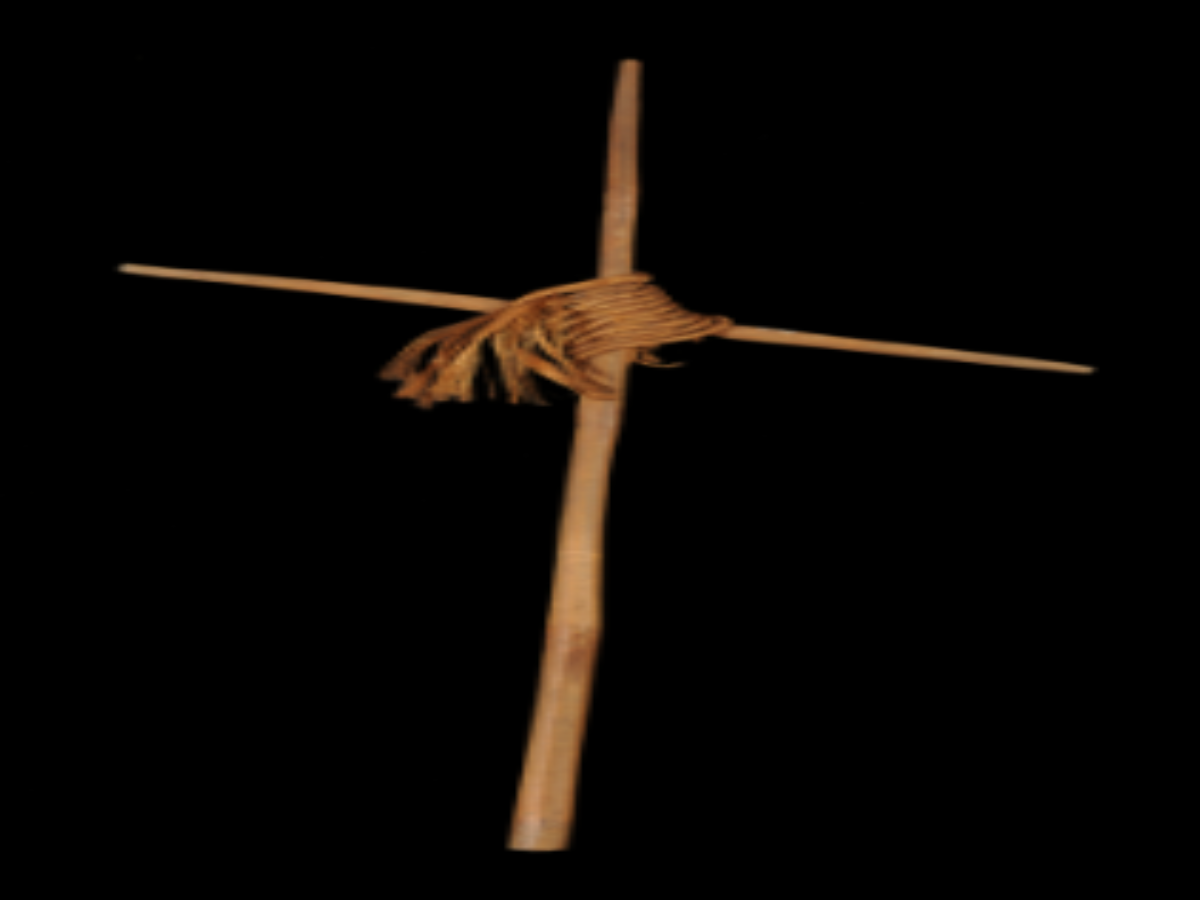State
Tribe Name
Art Type
short description
Traditionally a hand device made for twisting natural fibers into strong, durable ropes, the rope-making tool of the Rabha tribe is of obvious antiquity and an important aspect of their traditions. The Rabhas, an indigenous community predominantly found in the state of Assam, India, are known for their intimate knowledge of forest resources and their very skilled craftsmanship of bamboo and natural fibers. The tool is made of two slender bamboo sticks ingeniously tied by coiled jute fiber to a cross-like structure. The vertical bamboo piece is longer, providing support and stability, while the horizontal bamboo piece is shorter, acting as a handle and/or tilting point while twisting fibers into rope. The jute fiber binding ties the elements together while offering some allowance for a bit of flex, which is critical for manipulating and twisting fibers with smoothness.
Thumbnail

Filter Postion
Left
Filter Background
Off
Theme
Filter Header Image

content
Image

description
Traditionally a hand device made for twisting natural fibers into strong, durable ropes, the rope-making tool of the Rabha tribe is of obvious antiquity and an important aspect of their traditions. The Rabhas, an indigenous community predominantly found in the state of Assam, India, are known for their intimate knowledge of forest resources and their very skilled craftsmanship of bamboo and natural fibers. The tool is made of two slender bamboo sticks ingeniously tied by coiled jute fiber to a cross-like structure. The vertical bamboo piece is longer, providing support and stability, while the horizontal bamboo piece is shorter, acting as a handle and/or tilting point while twisting fibers into rope. The jute fiber binding ties the elements together while offering some allowance for a bit of flex, which is critical for manipulating and twisting fibers with smoothness.
Rope-making on the said tool is mainly for twisting fibers of jute, barks, or plant stems into ropes for domestic, agricultural, or construction use. The Rabha tribe uses these handmade ropes for various day-to-day activities, including tying up bundles of crops, making traditional houses, and making fishing nets. The tool shows simplicity and efficiency in its construction and reflects the Rabhas' sustainable lifestyle and adaptive ingenuity. However, these remain largely relevant to tribal dwellers in rural Sankarimukh, some of whom may now have ready access to modern alternatives, because of their friendliness toward nature, low cost, and sociocultural reputation.
Rope-making on the said tool is mainly for twisting fibers of jute, barks, or plant stems into ropes for domestic, agricultural, or construction use. The Rabha tribe uses these handmade ropes for various day-to-day activities, including tying up bundles of crops, making traditional houses, and making fishing nets. The tool shows simplicity and efficiency in its construction and reflects the Rabhas' sustainable lifestyle and adaptive ingenuity. However, these remain largely relevant to tribal dwellers in rural Sankarimukh, some of whom may now have ready access to modern alternatives, because of their friendliness toward nature, low cost, and sociocultural reputation.
Image Mode
landscape
promoted
On
Verified
Off
